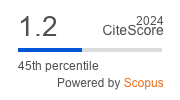The Effect of Solvents and Drying Temperature on the Physicochemical Properties of Darunavir and Darunavir Ethanolate Substances
https://doi.org/10.33380/2305-2066-2021-10-1-67-73
Abstract
Introduction. Usage of aggressive conditions (solvents, high temperature, etc.) in a dosage form manufacturing can lead to a change in the properties of a pharmaceutical substance. Darunavir (D) amorphous and darunavir ethanolate (DE) crystalline both have poor solubility, ability to pseudopolymorphism and are sensitive to high temperatures.
Aim. Study the effect of solvents and drying temperature on the physicochemical properties of D and DE substances
Materials and methods. D (Mylan Laboratories Limited), DE (Mylan Laboratories Limited), D (reference standard) 99,9 % (MSN Pharmachem Private Limited). D and DE weighed quantity was suspended in one of the solvents via magnetic stirrer and was dried via universal oven. Powder X-ray diffraction of dried samples was carried out via automatic powder diffractometer. Using DSC thermal properties of the samples were studied. Crystalline samples were examined using IR spectroscopy. Identification of D and DE was performed by HPLC method.
Results and discussion. This article summarizes study results of the investigation of various solvents and drying temperature influence on the physicochemical properties of D and DE are presented. The impact of solvent type and drying temperatures in physicochemical properties of the APIs was studied by X-ray powder diffraction, differential scanning calorimetry, IR spectroscopy and HPLC methods. It was shown, that solvent type and drying temperatures can result in the presence of crystalline D solvates or amorphous D.
Conclusion. To obtain the final drug containing as an API amorphous D, which perform better dissolution, one of the enlisted solvents can be used: dichloromethane, chloroform and heptane. In such case the intermediate product drying should be performed at not exceeding the solvent boiling point temperatures. In case of ethanol, methanol, acetone and tetrahydrofuran drying phase can be performed at temperatures, that are higher than melting points of obtained pseudopolymorphs. For the utilization of DE as an API only ethanol usage is efficient and drying temperature should not exceed 73.4 °C.
About the Authors
S. A. ZolotovRussian Federation
Sergey A. Zolotov
42/24, Volgogradsky av., Mosсow, 109316
I. A. Dain
Russian Federation
Igor A. Dain
42/24, Volgogradsky av., Mosсow, 109316
N. B. Demina
Russian Federation
Natalia B. Demina
8/2, Trubetskaya str., Mosсow, 119991
A. S. Zolotova
Russian Federation
Anna S. Zolotova
42/24, Volgogradsky av., Mosсow, 109316
E. S. Ponomarev
Russian Federation
Evgeny S. Ponomarev
42/24, Volgogradsky av., Mosсow, 109316
References
1. Zolotov S. A, Demina N. B., Zolotova A. S. Study of darunavir ethanolate physicochemical properties. Voprosy biologicheskoy, meditsinskoy i farmatsevticheskoy khimii = Problems of Biological, Medical and Pharmaceutical Chemistry. 2019;22(6):30–35. (In Russ.). DOI: 10.29296/25877313-2019-06-05.
2. Thakkar R., Thakkar R., Pillai A., Ashour E. A., Repka M. A. Systematic screening of pharmaceutical polymers for hot melt extrusion processing: a comprehensive review. International journal of pharmaceutics. 2020;576:118989. DOI: 10.1016/j.ijpharm.2019.118989.
3. Ruela Corrеa J. C., D’Arcy D. M., dos Reis Serra C. H., Nunes Salgado H. R. Darunavir: A Critical Review of Its Properties, Use and Drug Interactions. Pharmacology. 2012;19:102–109. DOI: 10.1159/000339862.
4. Dahan A., Miller J. M., Amidon, G. L. Prediction of solubility and permeability class membership: provisional BCS classification of the world’s top oral drugs. The AAPS journal. 2009;11(4):740–746. DOI: 10.1208/s12248-009-9144-x.
5. Goizman M. S., Zotova O. A., Kamalova A. A., Popova A. O., Shobolov D. L., Korlyukov A. A., Suponitskii K. Y., Shimanovskii N. L., Zaitsev S. A., Degterev E. V. Issues related to patent protecton of darunavir and its analogs. Khimiko-Farmatsevticheskii Zhurnal. 2016;50(6):45– 51. (In Russ.). DOI: 10.30906/0023-1134-2016-50-6-45-51.
6. Obshchaya farmakopeynaya stat'ya 1.1.0017.15. Polimorfizm [General monograph 1.1.0017.15 Polymorphism]. State Pharmacopoeia of the Russian Federation. 14th ed. Moscow, 2018. Available at: http://femb.ru/femb/pharmacopea.php/ (In Russ.).
7. Obshchaya farmakopeynaya stat'ya 1.2.1.1.0011.15. Rentgenovskaya poroshkovaya difraktometriya [General monograph 1.2.1.1.0011.15. X-ray powder diffraction]. State Pharmacopoeia of the Russian Federation. 14th ed. Moscow, 2018. Available at: http://femb.ru/femb/pharmacopea.php/ (In Russ.).
8. Reddy B. V., Jyothi G., Reddy B. S., Raman N. V., Reddy K. S., Rambabu C. Stability-indicating HPLC method for the determination of darunavir ethanolate. Journal of Chromatographic Science. 2013;51(5):471–476. DOI: 10.1093/chromsci/bms165.
Supplementary files
Review
For citations:
Zolotov S.A., Dain I.A., Demina N.B., Zolotova A.S., Ponomarev E.S. The Effect of Solvents and Drying Temperature on the Physicochemical Properties of Darunavir and Darunavir Ethanolate Substances. Drug development & registration. 2021;10(1):67-73. (In Russ.) https://doi.org/10.33380/2305-2066-2021-10-1-67-73










































